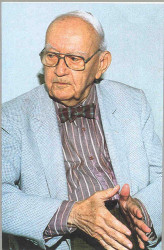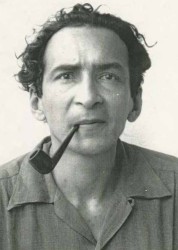Pocomania
Long Mountain, rise,
Lift you’ shoulder, blot the moon,
Black the stars, hide the skies,
Long Mountain, rise, lift you shoulder high.

Black of night and candle light
White against the black of trees,
And altar white against the gloom,
Black of mountain high up there,
Long Mountain, rise,
Lift you’ shoulder, blot the moon,
Black the stars, black the sky.
Africa among the trees,
Asia with her mysteries,
Weaving white in flowing gown
Black long mountain looking down
Sees the shepherd and his flock
Dance and sing and wisdom mock
Dance and sing and falls away
All the civilized today
Dance and sing and fears let loose
Here the ancient gods that choose
Man for victim, man for hate,
Man for sacrifice to fate.
Hate and fear and madness black
Dance before the altar white.
Comes the circle closer still,
Shepherd weave your pattern old.
Africa among the trees
Asia with her mysteries.
Black the stars, hide the sky,
Lift you’ shoulders, blot the moon
Long Mountain, rise.
Sir Philip Sherlock
Jamaica
And O but she was fair
The hill flamed upwards scorning
Death and Failure here.
I saw through the mists of morning
A wave like a sea free
Faith like a sea set free
Dark tide bright unity.
I saw my friends in the morning
They called from an equal gate
“Build now: whilst time is burning
Forward before it’s late”
The old Gods awake
Past and future break
On as the voices roll
Move as a single whole
Forward
Forward
Forward
O country to your goal,
MG Smith
These are two poems from an age when West Indian poetry was establishing itself in world literature, seeking identity and independence. They came out of that lengthy period extending through the early 20th century when imitation of English Romantic and Victorian verse was common. Both, however, contain much evidence of the developing poetry with demonstrations of identifiable evidence of the social, political and artistic influences upon the literature.

Critic G R Coulthard, a specialist in French literature, who anthologized both poems in Caribbean Literature: An Anthology (1966) wrote that MG Smith “was closely associated with the magazine Focus and the Jamaican independence movement.” Some of those poets were “the first Jamaican poets to break away from the strangle-hold of Victorianism, which had characterized Jamaican poetry in the first three decades of the twentieth century.” While Sherlock’s “Pocomania” contains elements of an attempt at local identity, a poet who broke away from that Victorian strangle-hold long before, was Claude McKay. As early as 1911 McKay published a collection of poems in Jamaican Creole, Constab Ballads, followed by another, Songs of Jamaica in 1912 giving voice to the struggles of the unprivileged. Smith’s “Jamaica” remains strictly in the old English style and metre, but very well reflects the growing independence movement in its theme.
The poem is patriotic with praise of country. It does not descend into a description of landscape like so many of the imitative verse, although natural beauty is a clear subject. It suggests political advancement and a sense of nationhood at a time when local political advancements were building up. As it happened, the leading member of the Focus group was the wife of Norman Manley, founder of the People’s National Party (PNP). Outside of that the rise of the artistic movements did parallel the political mood of nationalism at the time. But the echoes of nineteenth century English verse are obvious in Smith’s poem as one marks the lilt and march of the rhythm and the choice of diction.
Sherlock, who rose from being head of the Extra Mural arm to become Vice-Chancellor of the UWI, was also a known folklorist and researcher of Anansi among other traditions. The poem reproduced here is mainly about the Long Mountain, but is titled “Pocomania”. The Long Mountain is located in the North-Eastern boundaries of the city of Kingston, separating the Mona area and the UWI Campus from other parts of the city. Its physical presence, which dominates the view from the campus is repeatedly referenced in the poem in personified tones, giving the physical landscape movement and rhythm.
The poem is addressed to the mountain, but it is very rhythmic with a particular ring and cadence about it. That is where its title comes in, because the verse is charged with spiritualism, personification and the imagery of the pocomania. The pocomania is a Jamaican spiritualist/ revivalist religion that is a hybrid of Christianity and the survival of African ancestor worship in Jamaica. While the main belief is Christian, the text of the forms of worship contain African-derived drum rhythms, the use of tambourines and shak-shaks, dancing, spirited singing, rituals and spirit possession.
The verse tries to imitate those rhythms throughout and to capture the possession experience. Some references might even be to the location of a well-known pocomania movement led by a ‘Shepherd’ named Alexander Bedward who operated in August Town. His location is in the town which lies at one end of the university campus in a valley north-east of Long Mountain. The story of Bedward who promised his flock that he would fly to heaven became legend or history. This belief in flight to heaven is linked to the myth of Africans who were able to fly away from the New World and re-cross the ocean back to Africa.
These poems taken from a past age in the development of West Indian poetry are therefore very instructive about the state of the literature at that time and how it was to advance later.







